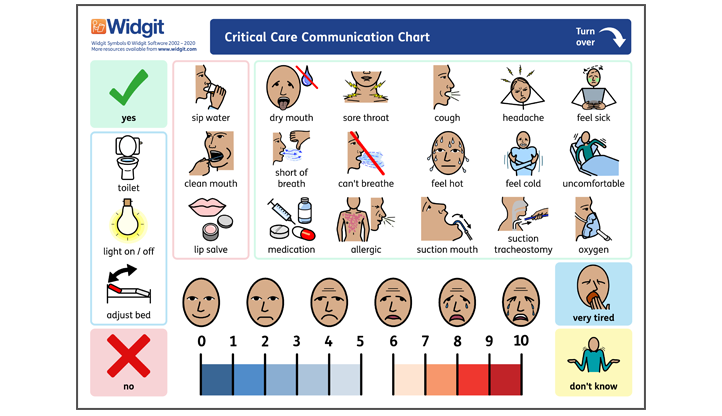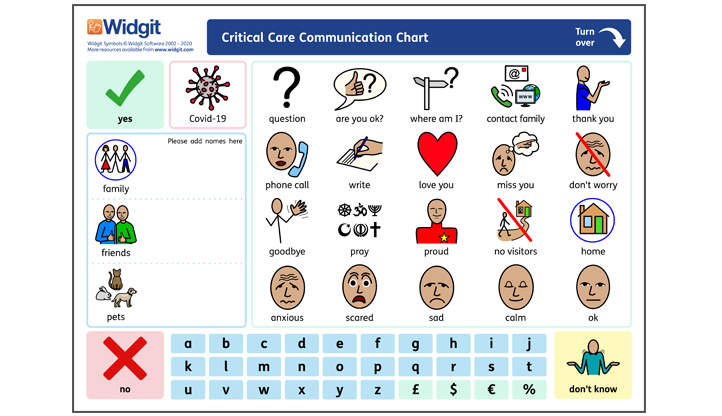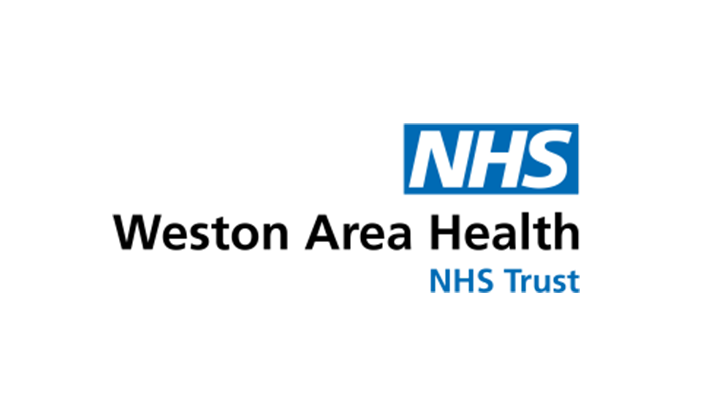- You are here:
- Home
- International recognition for Covid-19 Communication Chart
International recognition for Covid-19 Communication Chart
Widgit symbol chart created to aid communication with critically ill Covid-19 patients




The speech and language therapy (SLT) team at Weston General Hospital has been working with Widgit Software to produce a critical care communication chart to support patients if they have difficulty communicating when they are unwell due to COVID-19. The Critical Care Communication Chart, which is a symbol board, was developed at Weston General Hospital in collaboration with Widgit...
The Critical Care Communication Chart assists medical staff to communicate with patients who are critically ill due to COVID-19 (or other conditions). It can make communication possible even if the patient is being ventilated or has a tracheostomy (but is alert).
The chart includes symbols for immediate care needs as well as messages the patient may want to pass to family members. Patients simply point to items when they are either too fatigued or are unable to talk. Patients who are unable to point can be helped by a member of their care team pointing to areas on the chart or lines in the chart and asking whether it's one of the messages there – the patient just indicates yes or no (also on the chart), and then each item is pointed to in turn until the patient indicates 'yes'.
SLTs usually use communication charts with people diagnosed with communication problems but these charts are for everyone. The current situation has made all staff and patients more aware of communication issues, including staff trying to communicate while wearing PPE (personal protective equipment).
The chart comes in two versions, a free pdf download, which has already been downloaded many thousands of times, and an online talking version where the patient, or a member of their care team, taps a cell on the board and their choice is spoken aloud.


Emma Shah, a speech and language therapist at Weston General Hospital who played an integral part in the development of the chart, said:
As news of the pandemic broke, it became clear to me that supporting communication was going to be crucial and I wanted to be able to offer communication boards for use in hospitals, and I wanted them to be available globally.
I contacted Widgit and the partnership was born. Sue White from Widgit gave her time to the project for free, bringing her range of experience both with the initial chart and with the many revisions and translations. Both Sue and her Widgit colleague Tom Jelley added many items to the chart, developed new symbols and had much influence on layout.
Between Widgit and the whole team of SLTs at Weston General Hospital, prototypes were checked,
layouts discussed, items added and taken away and consideration given to symbol size and so on. Sometimes making something that is simple is harder than something more complex!”
As well as giving their time and expertise designing and symbolising the Critical Care Communication Chart, Widgit has donated four software licenses to enable our speech and language therapists at Weston General Hospital to make personalised communication boards and therapy resources for our patients.
These tools are a vital part of supporting staff and patients as they enable our patients to have a voice and feel more in control of their care at a time when they must feel very vulnerable. We are so very grateful for the support from Widgit and we are distributing the communication chart to relevant wards here at the hospital as well as to the wider SLT community.
Emma is a committee member for Communication Therapy International (a Royal College of Speech and Language Therapists Clinical Excellence Network) who are also now involved in the project, alongside CPLOL (the organisation for national speech and language therapists associations across Europe) and has been able to call upon the knowledge of a number of ex-colleagues, from Wales to Kenya, to support translations, which includes key colloquialisms, and the communication chart is now in the process of being translated into around 60 languages.
Feedback from translators has been that Widgit symbols are very accessible to people of all ages and cultural backgrounds – the skin colours have been varied for different ethnicities and the Widgit team is working with translators to continually develop different scripts and languages.
Sue White from Widgit said:
The expertise and professionalism of the team at Weston General Hospital has been invaluable in the development of this tool and we are thrilled to have been part of this project. We hope it will help healthcare workers and patients across the world at this very challenging time.

 Critical Care Covid-19 Communication Chart
Critical Care Covid-19 Communication Chart